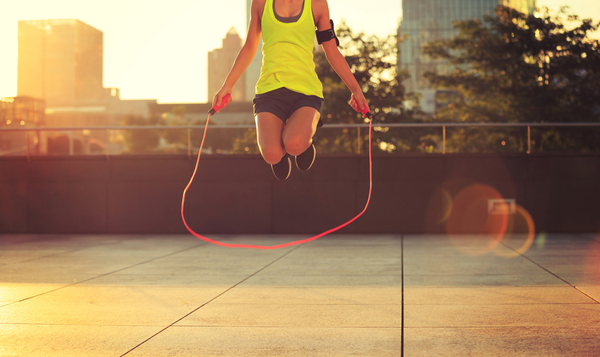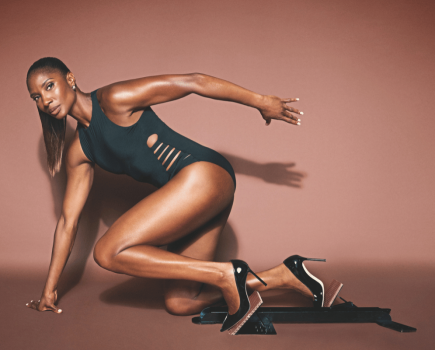Want to up your exercise but don’t want to run on a treadmill for hours? Skipping is a fun and challenging way to get your heart pumping! This month marks the ‘100 skips a day in March‘ challenge for Cancer Research, so why not get involved? Read on for 6 more reasons to take on the challenge.
1 It strengthens your bones
As we age, doing high-impact, weight-bearing exercise becomes more important to help prevent osteoporosis. The quality of knee cartilage in post-menopausal women with knee osteoarthritis was improved by jumping, according to a Finnish study, which also found that it was the most efficient way to improve bone strength.
A study from Manchester Metropolitan University found that just two minutes of jumping three times a week could help prevent osteoporosis in older women.
Try this… Box-drops, as suggested by the Manchester study – stand on the edge of a plyometrics box (see our recommendation in the panel) around knee height and jump off, landing on two feet while bending your knees.
2 It improves balance
‘Mixing up your jumps – for example, one footed, two footed, spinning around 180˚ – can improve your motor skills and help you become more co-ordinated,’ says Kira Mahal, personal trainer and founder of PT network MotivatePT.
‘Your jumps may be slightly wobbly but the more you practise, the more stable you will become.’ Mini trampolining may help too. A 2014 study found that exercising on a mini trampoline improved balance in older women.
Try this… Imagine that you’re speed skating and jump from side to side with that motion, swinging both arms in the direction of the leg you’re landing on. Focus on stabilising your balance before jumping to the other side.
3 It gives an energy and brain boost
‘Jumping can give you more energy because it gets your heart pumping harder and increases the circulation of oxygen throughout your body,’ says Kira.
If you have a sedentary job, a bout of jumping exercises will give you a mental boost and shake you out of a post-lunch energy slump.
Students who incorporated exercise such as star jumps into their day did better in tests and made better academic progress than sedentary peers, according to a 2019 study from University College London.
Try this… Jumping jacks (aka star jumps). Jump feet wider than hip-width apart at the same time as clapping your hands above your head. As your arms come down, jump feet back together. Aim for 20.
4 It will lift your mood
Jumping is a joyful, childish movement and can see off a low mood in minutes. ‘Your body also releases serotonin when you jump, which helps to reduce stress,’ says Kira.
Try this… Go out into the garden or a nearby park and skip with a skipping rope. Mix it up between jumping with both feet at the same time and hopping. Skip for one minute, rest for a minute, and try to repeat four times.
5 It does wonders for your leg muscles
You may have heard of plyometrics – dynamic jumping exercises that boost the explosive power of your leg muscles, help prevent age-related muscle loss and can improve performance in several sports such as running or tennis.
A 2018 study published in Sports Medicine showed that plyometric training is safe and effective – even for older adults – and increases muscular performance.
Try this… Jump squats. Stand with feet hip-width apart. Then, bend at the knees as though you’re going to sit on a chair behind you, ensuring your knees don’t extend out beyond the end of your toes. As you rise up, use your leg muscles to power yourself up into a low jump. Repeat this move 10-20 times.
6 It burns calories and makes you fitter
Jumping is a powerful exercise and that’s reflected in the energy it burns. For example, skipping burns about 300 calories in 30 minutes. Trampolining is another great option – and even though it’s a moderate to vigorous exercise, people report it as feeling easier than it is, according to a study by the American Council on Exercise (ACE).
Another 2018 study of overweight women using trampolining as an exercise saw improvements in waist circumference, fat mass and muscular mass, a significant decrease in blood pressure, and an increase in fitness. What’s not to like!








